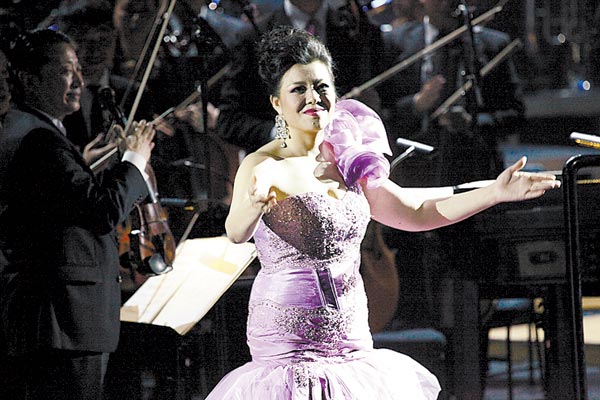Still, the 1956 La Traviata was a milestone, not only because it featured all Chinese artists, but because it happened at all in a heavily ideological climate. The main reason Verdi could be performed at all in the early years of New China was that the Italian composer was embraced in the Soviet Union. A Soviet soprano was coaching at the China National Opera House, and to the amazement of everyone around, she proposed doing La Traviata rather than a Russian opera. "She had played the leading role in Moscow, and she showed us glamorous photos of it," recollects Liu.
 |
|
Li Guangxi, who initiated the role of Alfredo Germont in New China, sang the opera from 1956 to 1963, and then after the "cultural revolution" (1966-76), from 1979 to 1984. Using the original French La dame aux Camelias as the Chinese title, the opera was so popular that during a 1962 run in Shanghai, it filled a 2,400-seat theater for 20 nights, with the ticketbuying line stretching for hundreds of meters along the street. The 1979 tour of Tianjin, saw the opera performed 39 times in a 2,300-seat theater.

|
|
La Traviata was also the first Western opera to be revived in post-"cultural revolution" China, later followed by Rigoletto, Il Trovatore and many of Verdi's middle-age work. But for the masses with little access to the occasional theatrical performance, the availability of the videodisk around 1990 was a watershed in raising the exposure to-and level of appreciation for-Verdi and other Western musicians. There are accounts of opera-curious youths bicycling across Beijing to attend screenings of the 1983 film version of La Traviata directed by Franco Zeffirelli and starring Domingo. Though using an informal venue with disregard to authorization, the run was said to be much longer than most blockbusters of today.
